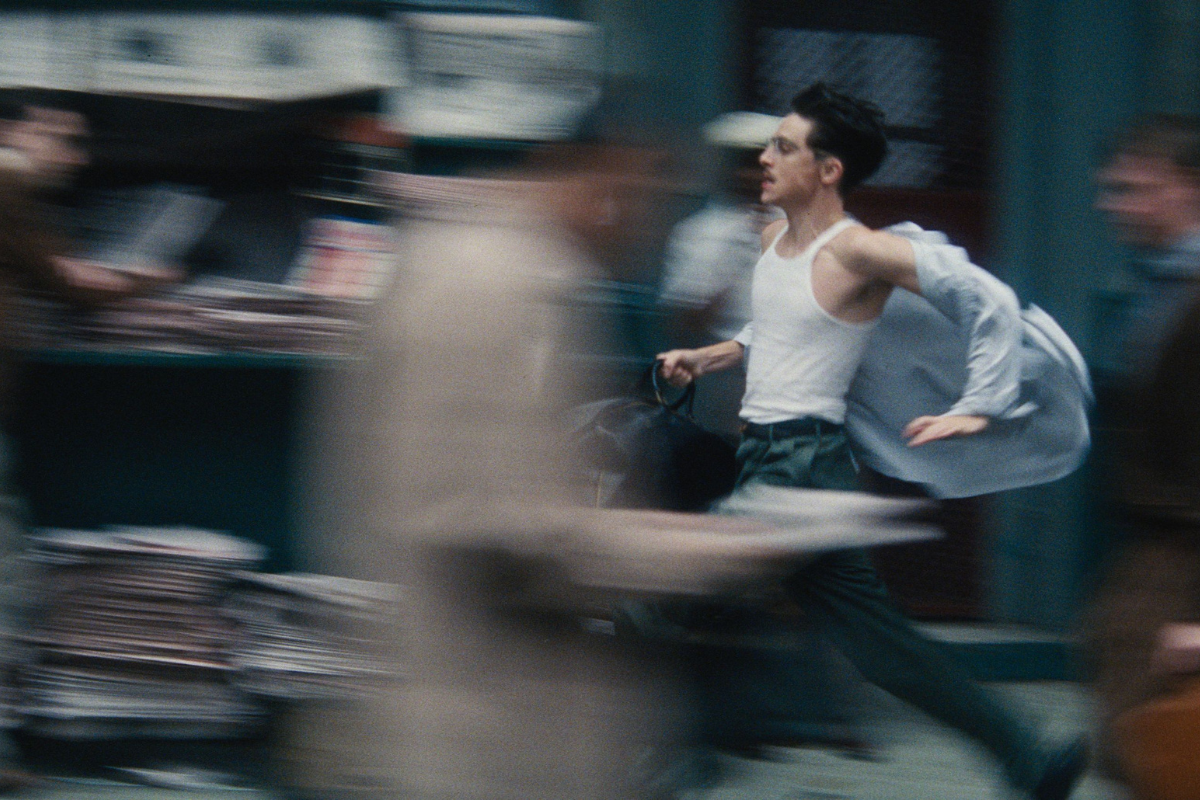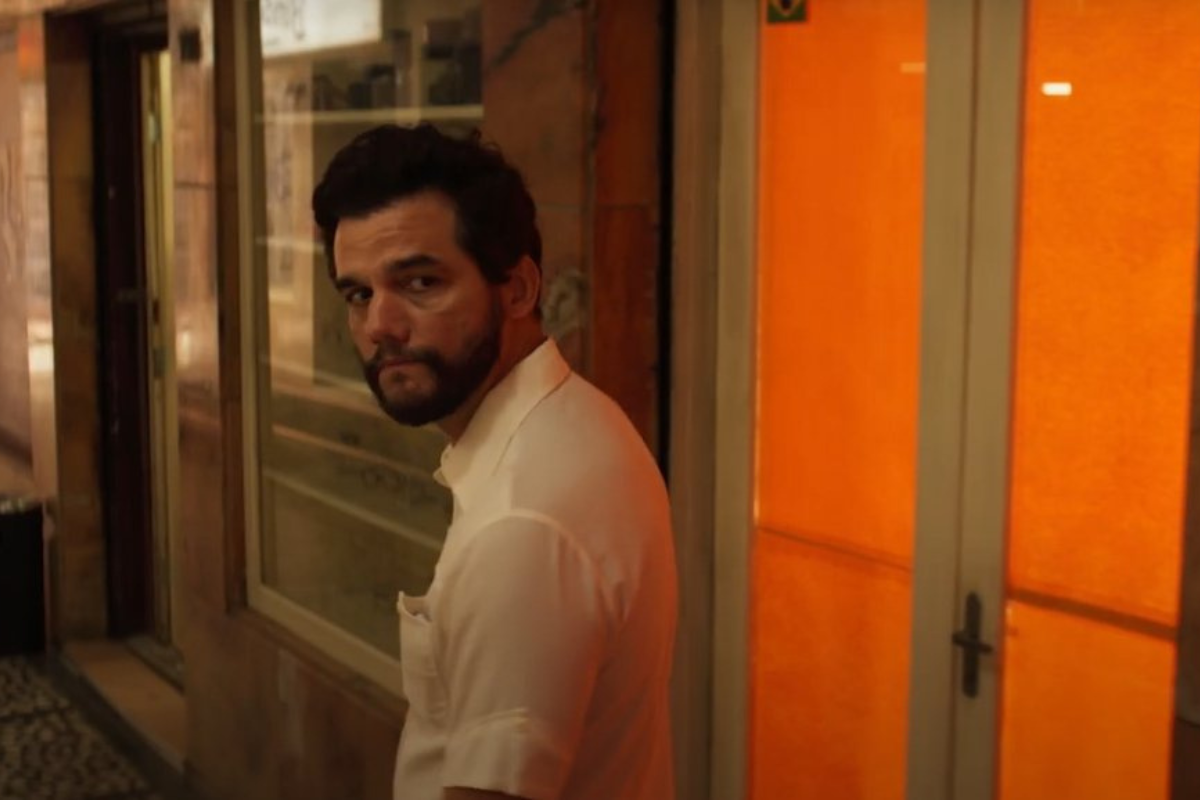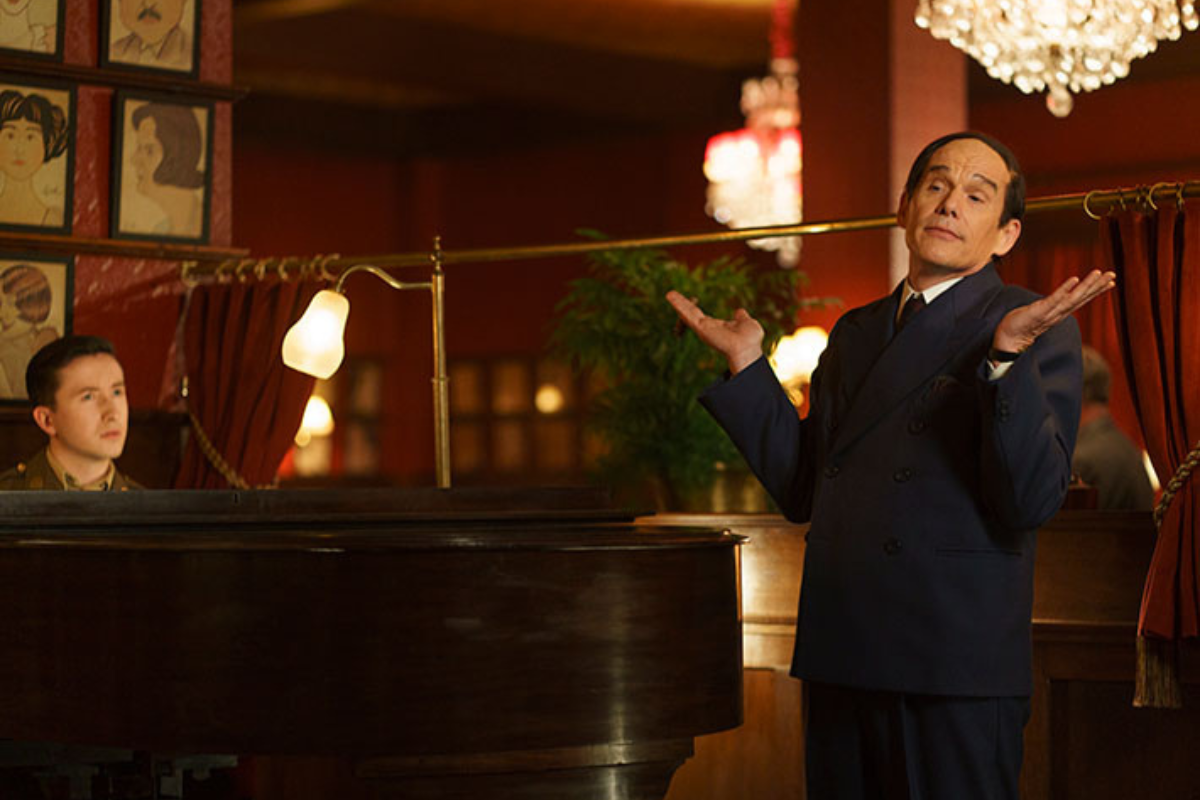MEET THE READER: Problem ‘Passengers’
Ray Morton explores the many flaws in the movie, Passengers, coming up with a much more compelling execution plan for the original premise.
Ray Morton is a writer, senior contributor to Script magazine and script consultant. His new book A Quick Guide to Screenwriting is now available online and in bookstores. Follow Ray on Twitter: @RayMorton1
I recently saw Passengers, a science-fiction adventure film starring Jennifer Lawrence and Chris Pratt, written by Jon Spaihts and directed by Morten Tyldum. It was a Christmas release by Columbia Pictures and was something of a disappointment, earning mostly poor reviews and mediocre box-office returns. Despite this negative reception, I was interested in seeing the film because I thought the premise – a spaceship is traveling from Earth to a distant planet, a voyage that will take 120 years to complete. There are 5,000 passengers aboard in suspended animation. When the ship malfunctions, two of those passengers awaken ninety years too early and must now live out their lives in desperate isolation – sounded interesting (and because I love Jennifer Lawrence).
It turned out to be an instructive experience from a screenwriting perspective. While I don't think the movie deserved some of the harsher brickbats thrown at it, I do agree with most of the critics that it is definitely not a (creatively) successful movie. And that wasn’t the fault of the director, who did a decent job. Or the actors or other members of the creative and technical crew, all of whom did solid work. No, the flaws in this film were primarily in the narrative – despite containing some very good elements (including the aforementioned premise and some very sly and effective satire of modern customer service), the story the movie told was extremely problematic.
This is not intended to be a swipe at screenwriter Jon Spaihts. I have no idea where the story’s problems originated. While it’s possible they existed in Spaihts’s original screenplay, it is also entirely possible they were the result of input from the director or the producer or from studio executives. I actually think the latter is more likely since the piece definitely has that "too many cooks" feel to it. Whatever the case, my comments refer solely to the narrative as presented in the finished film.
(SPOILER ALERT: From here on out I will be discussing some of Passengers’s key plot points. If you haven’t seen the film yet, you may want to wait until after you do to read the rest of this blog.)
The reason I felt Passengers was worth examining is that its narrative issues are ones I see in a lot of scripts (both aspiring and pro) and involve a number of problems that screenwriters across the board wrestle with. They include:
The problem of having a “bad” protagonist.
The protagonist is the story’s main character. The movie’s story is the protagonist’s story; therefore, the audience must develop a connection with the protagonist in order to develop a connection with the movie. This is easy to do if a protagonist is “likeable” – if he has positive, attractive traits and does positive, attractive things that the audience can admire and enthusiastically support. It is much harder to do if the protagonist is “unlikeable” – if he has unappealing traits or does questionable things that have the potential to alienate viewers. This was a big challenge in the 1970s – the time of the anti-hero – and remains a big challenge in the present era in which we are so in love with “dark” material: when so many of our movies and TV shows feature protagonists who are deeply troubled, deeply flawed, jerky, morally compromised, and/or out-and-out criminals.
For the audience to develop a connection with an “unlikeable” character, the key is sympathy – while viewers do not necessarily need to admire a protagonist for a film to be successful, they do need to understand why he is the way he is and have some empathy for the things he does. Therefore, the author must clearly explain and dramatize these things in the screenplay. Sympathy can also be generated if the problematic protagonist displays some sort of remorse for his questionable behavior and/or seeks some sort of redemption
The amount of the sympathy viewers have for the unlikeable protagonist must outweigh the amount of revulsion they have for his negative traits and behavior. For example, if his reasons are solid enough, we might have sympathy for a desperate protagonist who shoplifts or robs a bank to obtain some money for a much-needed operation for his child, but we probably wouldn’t have any sympathy for one who beats an old lady to death with a baseball bat to steal her purse so he can buy a pack of Twinkies.
Jim Preston, the protagonist of Passengers, is initially presented as being a very likeable guy, but soon after the movie begins he does a very, very bad thing. After he’s released from cryogenic sleep by a mechanical malfunction, Jim awakens a second passenger – Aurora Lane – from her artificial slumber. In the world of this movie, this is an act akin to murder, because with no way to return to suspended animation, Aurora is now doomed to spend the rest of her life in limbo, with no chance to accomplish her goals or live out her life in the manner and location that she planned. For all intents and purposes, her life is now over.
The narrative does a good job dramatizing Jim’s motives for doing what he does. After his initial awakening, Jim spends a year by himself, alone on the otherwise empty ship, and slowly starts to go mad from the isolation. His main reason for awakening Aurora is so that he’ll have a companion to interact with so he won’t lose his mind. However, while we are certainly sympathetic to Jim’s desire to have a friend and retain his sanity, that sympathy is not enough to counterbalance our revulsion for his deed – no matter how lonely he is, it can never be enough to justify murder.
Making matters worse, the story then introduces two additional elements that further reduce our sympathy for Jim:
- Before Jim awakens Aurora, the script introduces the character of a robot bartender who works in one of the spaceship’s lounges. The humanoid robot (played by Michael Sheen) is introduced as an expositional device – to give Jim someone to talk to so we can understand his inner thoughts and feelings during his time alone. The problem is that the robot – who is chatty, witty, and empathetic – is a perfectly serviceable companion, which severely undercuts the sense of isolation that is used to justify what Jim does to Aurora.
- Perhaps recognizing that the isolation might not be enough to justify Jim’s actions, the filmmakers gives him a second motive for awakening Aurora. During his time alone, Jim comes across a recording of the very beautiful Aurora in which she explains her reasons for going on the trip and shows off her sparkling personality. Jim plays this recording over and over again and eventually falls in love with Aurora (or at least the idea of her). The intent appears to have been to generate additional sympathy for Jim by painting him as some sort of hopeless romantic. In execution, however, it causes him to come across as a creepily obsessed stalker, which makes him even less sympathetic than he already was.
Jim eventually expresses remorse for his actions, but not until after he has pursued a romance with Aurora and she has inadvertently discovered what he has done. The fact that he selfishly advanced his own interests before coming clean and that fact that he only comes clean because he has been found out rather than confessing on his own don’t do much to help his case.
The story gives Jim a chance to redeem himself in the third act when it is discovered the spaceship is about to blow up. There’s one way to save it – and Aurora and the other 4,998 sleeping passengers on board – a way that requires Jim to perform an action that will certainly result in his being killed. To Jim’s credit, he willingly agrees to sacrifice himself and thus earns back some of the sympathy he has lost.
However, after Jim saves the day, he improbably survives his death trap. The movie doesn’t explain how he avoids death, he just sort of does. This allows Aurora to forgive him and for them to get together. This unearned happy ending – which I suspect was insisted upon by the studio – rewards Jim with the romance he committed a heinous act to obtain. This completely undercuts his repentance and his sacrifice, squandering whatever sympathy we had just regained for him.
As a cumulative result of all of these choices, we find it impossible to care about Jim and thus impossible to care about his story.
The problem of giving characters the wrong functions.
Jim Preston is presented as the protagonist of Passengers – he is the character we meet first; he is the character who drives most of the major events of the narrative; and he is the character whose arc we follow from the beginning of the story until the end.
The problem is that Jim is not the protagonist of Passengers. In terms of plot function, he is the antagonist. He is the character who does something horrible to an innocent character – causing enormous problems for that character to overcome – and then covers it up to protect himself. This makes him the movie’s “bad guy.”
Aurora Lane is actually the protagonist of Passengers – she is the “likeable” character who doesn’t do anything horrible; she is the character with a strong, clearly defined goal (she is planning to be the first person to journey to the distant planet and return so she can write about the experience), she is the character whose journey towards her goal is obstructed by the antagonist; she is the character who is most subject to the plot’s twists and turns; and she is the character who uncovers the antagonist’s deception. In other words, she is the movie’s “good guy.”
The problem is that Aurora is not presented as the “good guy;” instead she is presented as the sidekick/love interest – a character who mostly hangs around playing second fiddle to the main character, who is not the primary focus of the story, and who in the climax must follow the lead of the protagonist (who is actually the antagonist).
Because neither of these characters is playing the correct role, the drama in the story becomes quite mushy – the protagonist (who should be actively driving the story) is reactive and doesn’t do much and the antagonist is driving the narrative when he should be responding to the protagonist. The end result of all of this is that the audience sits around scratching its collective head and wondering just who the hell’s story Passengers is supposed to be.
The problem of lacking a consistent point-of-view.
Dramatic narratives work best when told from a consistent point of view – usually that of the protagonist. Passengers starts off being told from Jim’s perspective but eventually that perspective shifts and the story begins bring told from Aurora’s point-of-view. In the final third of the movie, the perspective switches back and forth between the two several times. This adds to the confusion over just whose story the movie is telling.
It also creates a great deal of redundancy. When the movie begins, we follow Jim as he explores the empty spaceship discovering its assets and limitations, a sequence that climaxes with him taking an extra-vehicular spacewalk that gives him a breathtaking view of the stars through which he is traveling. Later, after Aurora is awakened, we watch as she too takes the exact same voyage of discovery through the spaceship, encounters the exact same assets and limitations, and experiences the exact same breath-taking spacewalk. It’s fascinating the first time around but pretty dull the second.
The problem of allowing the audience to get ahead of the character.
One of the key tenets of dramatic writing is to never let the audience get ahead of the characters, a tenet Passengers does not observe, to its detriment. When Aurora first wakes up, Jim tells her that, like him, she was awakened due to a mechanical malfunction. The big twist in the narrative comes when Aurora discovers that she did not wake up accidentally, but instead was woken up on purpose by Jim. The problem is that, while this is a big surprise for Aurora, it’s not at all a surprise for the audience, since we have known about it all along and have actually grown quite bored waiting for her to catch up to where we’ve already been for quite some time. This storytelling choice robs the narrative of most of its suspense and all of its surprise.
The problem of having a cheat ending.
To work successfully, dramatic narratives must play by the rules – the rules they themselves establish for their worlds, their premises, and their story development. Audiences will accept just about any rules a film posits, but if the film doesn’t play by these rules, viewers feels cheated and will turn against the picture.
Passengers establishes that once someone is woken up from cryogenic sleep, they can never return to it. While this notion is a bit hard to swallow (it’s pretty hard to believe the powers-that-be made no provision for a potential malfunction on the ship’s most important piece of equipment on a voyage lasting over a century), it is what the story sets up and the rest of tale hinges upon it (without this stipulation, Jim could go back to sleep immediately and the movie would be over in five minutes). But then, at the end, the narrative suddenly reveals that there is a way for an awakened passenger to use the ship’s single automated hospital bed (another hard-to-swallow notion – a ship with 5,000 passengers only has one hospital bed?) to return to suspended animation after all. Coming right after the movie has allowed Jim to survive a certain-death situation for no clear reason, this surprise revelation violates the film’s established reality and so causes it to lose whatever credibility it has left.
Ultimately, the most frustrating thing about Passengers is that its basic concept and core ideas have so much promise. Had the issues examined above been decided just a little bit differently – had the characters been allowed to fulfill their proper functions in the narrative, had the story been told from a consistent point of view, and had the audience not been allowed to get ahead of the characters – what is now a disappointing misfire could have been transformed into a much more successful tale:
Aurora Lane awakens on the spacecraft ninety years too early. Thinking she is alone, she explores the ship, discovering its assets and limitations. At the end of her exploration, she discovers another passenger – Jim Preston – is also awake. He explains that they have both woken up because of a mechanical malfunction. As they come to terms with their situation, Aurora and Jim fall in love. Then Aurora discovers that Jim actually woke her up on purpose because he became fixated with her. She now sees him as the villain he is. He comes after her. As she fights him off, the ship begins to malfunction. The two are forced to work together to save the ship and themselves. As they do, Jim sacrifices himself to save the day and redeems himself in the process. In the end, Aurora reworks the ship’s technology to find a way out of her seemingly hopeless dilemma.
This approach – or one like it – would have told the same basic story but in a much more satisfying way, one that was more logical and believable and made the most of the piece’s inherent drama, suspense, and surprise. Thus, Passengers illustrates the importance of making the right creative decisions all the way down the line from initial conception to script to final cut. Only through smart choices can great ideas be transformed into great movies.
THE END
Copyright © 2017 by Ray Morton
All Rights Reserved
No portion of this article may be copied, reprinted,
or reposted without the permission of the author
However, feel free to link to this piece to your heart’s content
Get tips in writing great scripts in Ray's book
Getting Past the Hollywood Gatekeeper
Ray Morton is a writer and script consultant. His many books, including A Quick Guide to Screenwriting, are available online and in bookstores. Morton analyzes screenplays for production companies, producers, and individual writers. He can be reached at ray@raymorton.com. Twitter: RayMorton1






